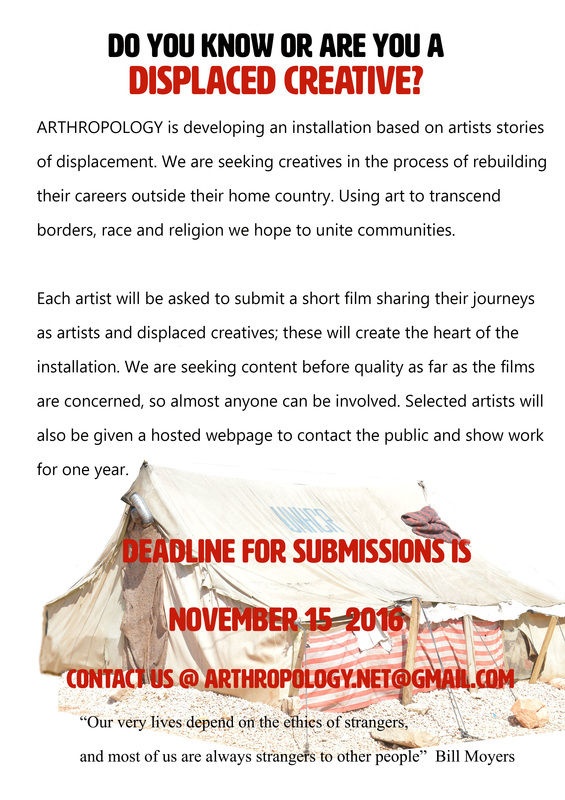Displaced Creatives
Displacement…can be quite strikingly productive. First, the marginalisation entailed in forms of migration can generate new perceptions of place and, in some cases, of the relationship between places. Second, the same dislocation can also facilitate personal transformation, which may take the form of ‘rewriting’ the self, discarding the lifelong habits and practices of a constraining social education and discovering new forms of self-expression.
Janet Wolff
By its very nature the process of creating can be very introspective. We sit in our studios trying to translate our ideas, our thoughts, into tangible form. But what if we did not have a studio, or a home, or the stability of knowing where we would be in a week, a month, a year? How does that affect an artist’s practice? We are defined by what we create so if we cannot create…do we cease to be? Conversely, is it, as Wolff says above, an opportunity for new perceptions and transformations? In this, the second chapter of THE BOOK OF JOURNEYS we pose the question: is exile less traumatic for artists because visual language is, by its very nature, more universal and transportable, and the fact that artists are, by nature, migratory beings?
The project will closely examine displaced artists in Lebanon, the UK and other European points of entry. Lebanon is a first stop for many migrants from Syria on their journey to safety., it also has half a million Palestinians living there. It has been stretched to the limits and the issue of its history with Syria has caused serious social unrest. The UK just voted to leave the EU, a vote based in part on virulent anti-migrant rhetoric. Both, though very different, provide a similar often unwelcoming environment for migrants.

